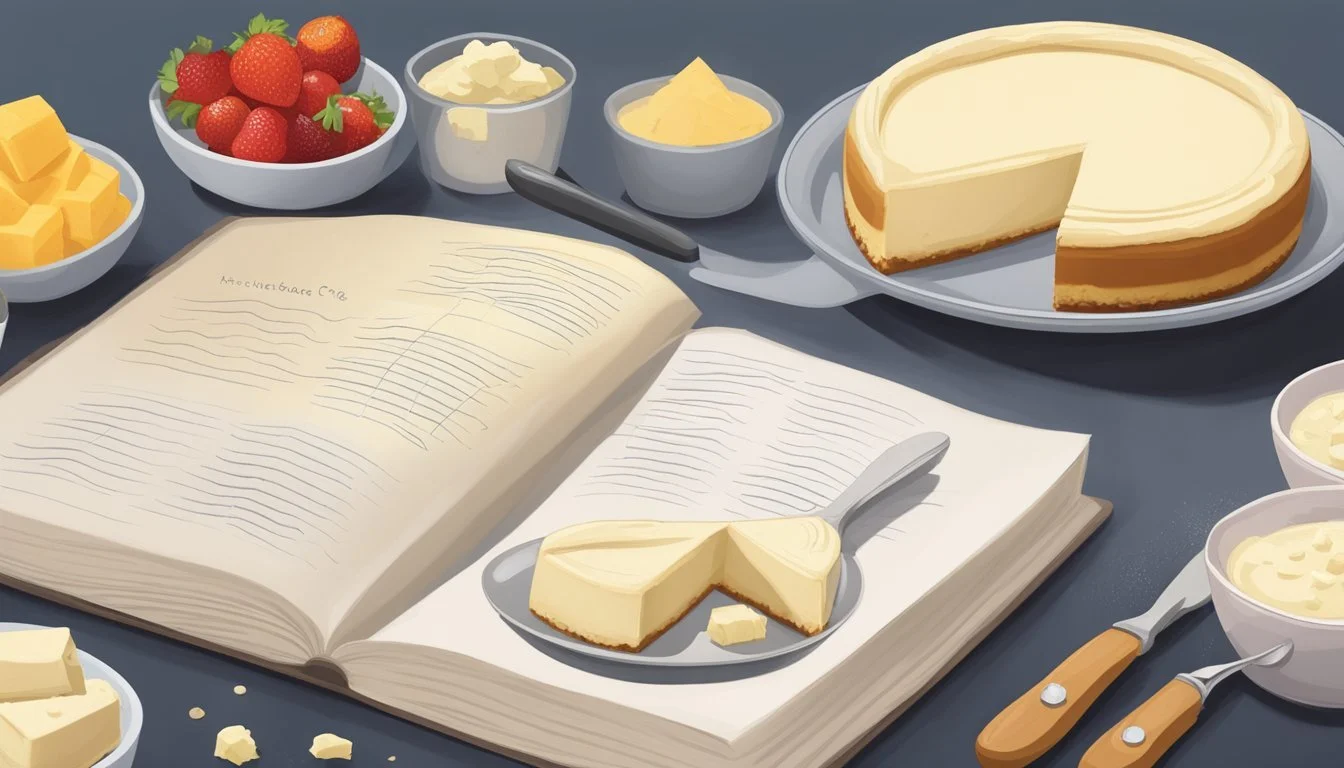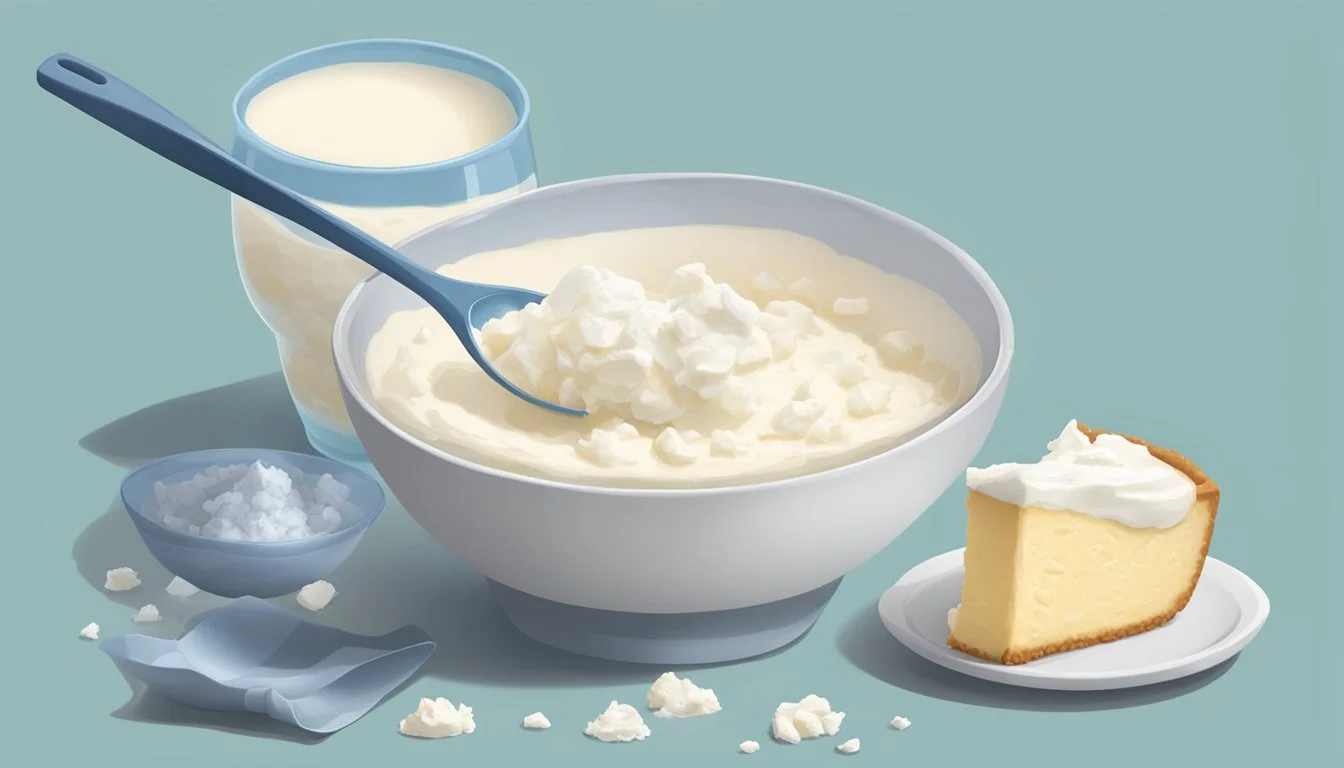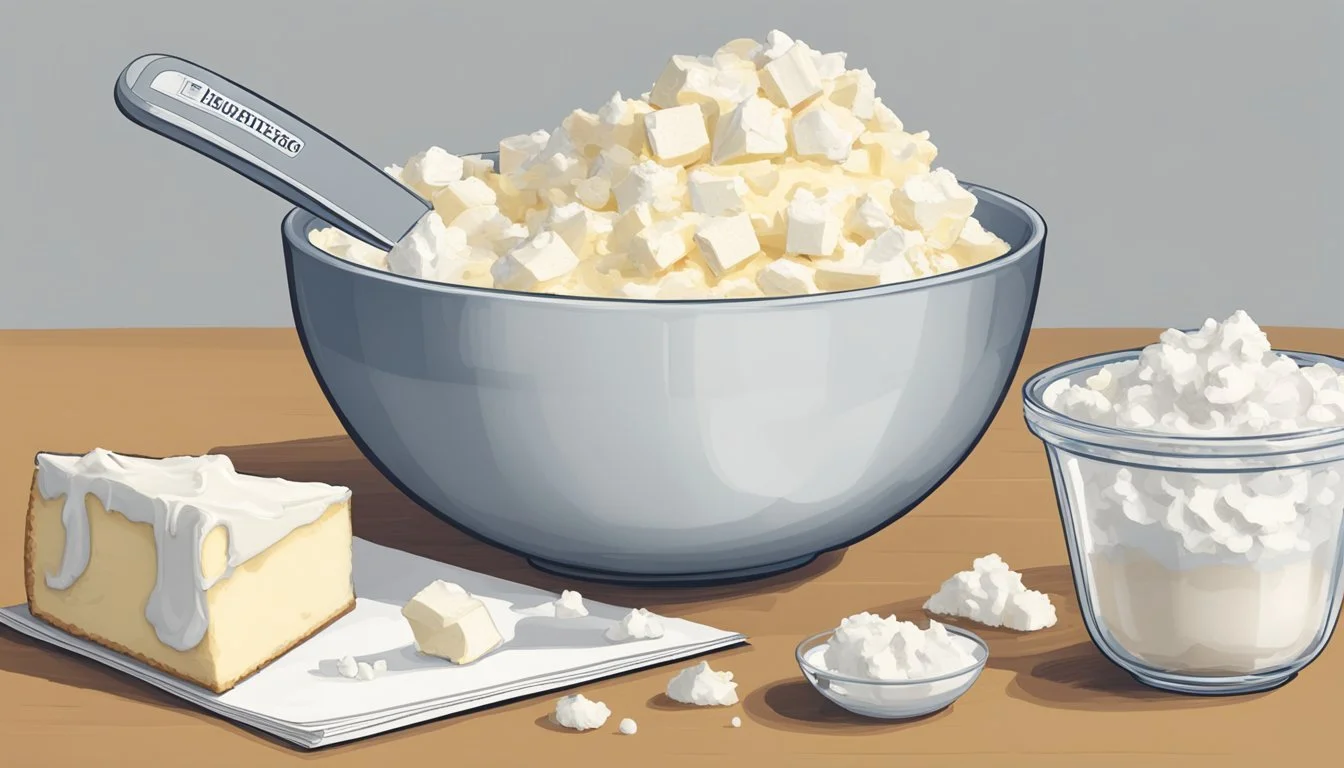How to Substitute Quark for Cottage Cheese in Cheesecake
A Seamless Swap Guide
When crafting a cheesecake, the choice of dairy product is pivotal to the dessert's final texture and taste. Quark, a creamy, soft cheese (What wine goes well with cheese?) commonly used in Central and Eastern European cuisines, brings a distinct tartness and smooth texture to cheesecake recipes. However, quark's availability may be limited in some regions, leading bakers to seek out suitable substitutes that maintain the integrity of the dish.
Cottage cheese (how long does cottage cheese last?)emerges as an excellent replacement for quark in cheesecake due to its similar consistency and protein content. It's a curd cheese with a mild flavor that, once processed to reduce lumpiness, can mimic quark's properties in a cheesecake. While cottage cheese is moister and has a lumpier texture than quark, simple modifications can help achieve a comparable result, ensuring the cheesecake's quality is not compromised.
Understanding Quark and Cottage Cheese
In the context of cheesemaking, both quark and cottage cheese hold significant places in culinary traditions, particularly in European cuisine, but differ substantially in nutritional profile and textural qualities, which are crucial to consider when substituting one for the other in baking recipes such as cheesecake.
Origins and Popularity in Europe
Quark is a staple in many European countries, with its origins deeply rooted in the continent's culinary traditions. It is especially popular in German-speaking countries and Eastern Europe. On the other hand, cottage cheese, while also consumed in Europe, has a more global presence and is widely used in North America. Both cheeses are celebrated for their versatility and ease of incorporation into various dishes, from sweet to savory.
Nutritional Comparison
Here is how quark and cottage cheese compare nutritionally per 100g serving:
Nutrient Quark Cottage Cheese Calories Slightly fewer Slightly more Protein 15-18% 10-12% Fat Varies, low-fat options available Typically higher than quark Carbohydrates Low Low Cholesterol Low Moderate Sodium Lower Higher Fiber None None Calcium High Moderate
Quark is generally higher in protein and calcium but lower in fat, cholesterol, and sodium than cottage cheese. Consequently, it is often considered a healthier option for those monitoring their nutrient intake.
Textural Differences in Baking
In baking, the texture is a vital factor, and quark and cottage cheese bring different characteristics to the table. Quark is known for its smooth, creamy consistency, lacking the curds found in cottage cheese. This makes it ideal for baking applications where a uniform texture is desired. Cottage cheese, with its larger and occasionally lumpy curds, can contribute a different texture which may or may not be desirable depending on the recipe. When used in cheesecake, one should blend cottage cheese to achieve a smoothness similar to that of quark.
Cheesecake Basics
In the realm of desserts (What wine goes well with desserts?), cheesecakes stand out for their luxurious texture and rich flavor. Comprehending the different types, key ingredients, and the role of dairy is pivotal in creating the perfect cheesecake experience.
Types of Cheesecake
American Cheesecake: Traditionally, American cheesecake is known for its rich and creamy texture derived from cream cheese (how long does cream cheese last?), often resting on a crumbly graham cracker crust.
German Cheesecake (Käsekuchen): This version typically uses quark, a tart dairy product, creating a lighter and less sweet cheesecake compared to its American counterpart.
Key Ingredients
Cheese: Critical to the structure and taste, with cream cheese being a staple in American styles and quark or cottage cheese in German recipes.
Sugar: Sweetens the dessert, balancing the tang of the cheese.
Eggs: Act as a binding agent, giving the cheesecake its classic firm yet delicate texture.
Butter: Often used in the crust, bringing additional flavor and helping to achieve a crumbly texture.
Role of Dairy in Texture and Flavor
Dairy is the cornerstone of both the texture and flavor profile of a cheesecake. In American cheesecakes, the use of cream cheese imparts a dense and smooth consistency, while German cheesecakes benefit from the lighter texture of quark. Cottage cheese can be used as a substitute for quark to mimic the moisture content and creaminess, though it may yield a slightly different texture and should be well-puréed to avoid a grainy consistency. The dairy component fundamentally shapes the mouthfeel and can carry flavors such as vanilla or citrus to create a more complex taste experience.
Preparing to Bake
Prior to baking a cheesecake with cottage cheese as a substitute for quark, one must ensure that all baking tools are ready and the oven and pan are appropriately prepared. This groundwork is crucial for a seamless baking process.
Essential Baking Tools
To begin, the baker needs to gather the following essential baking tools:
Springform Pan: A requisite for cheesecake baking, allowing for easy removal once the cake is baked.
Mixing Bowls: Several sizes to mix the ingredients separately before combining.
Electric Mixer: Ensures a smooth, fluffy texture of the cheese mixture; a hand mixer or stand mixer will suffice.
Parchment Paper: Used to line the bottom of the pan for non-stick purposes.
Measuring Cups and Spoons: For precise ingredient portions.
Spatula: To fold and mix ingredients gently and scrape the sides of the bowl.
Oven Thermometer (Optional): For verifying the oven's internal temperature, ensuring it is accurately preheated.
Preheating and Pan Preparation
The baker should now focus on two critical preparatory steps:
Preheat Oven: The oven needs to be preheated to the temperature specified by the cheesecake recipe—typically between 325°F (163°C) and 375°F (190°C). Preheating ensures a consistent temperature for even baking.
Prepare Springform Pan:
Line with Parchment: Lining the base of the springform pan with parchment paper aids in the easy release of the cheesecake after baking.
Grease: Lightly grease the sides of the pan with butter or a non-stick spray, then optionally dust with flour to prevent sticking.
By following these steps, the baker sets the stage for a successful cheesecake where cottage cheese has been substituted for quark.
Quark Substitution Guide
This guide focuses on the specifics of substituting quark with cottage cheese in cheesecake, considering moisture, fat content, and flavor.
Adjusting for Moisture and Fat Content
Cottage cheese typically contains more moisture and has a chunkier texture compared to the smoother, creamier quark. To match the consistency of quark, one should drain the cottage cheese thoroughly using a cheesecloth or fine mesh sieve. Mixing the drained cottage cheese with a small amount of heavy cream can help achieve the fat content closer to that of quark, ensuring a rich final product.
Dealing with Flavor Differences
While cottage cheese is milder than quark, the flavor profile can be enhanced to more closely resemble quark by adding a small amount of lemon juice or vinegar for a subtle tang. This adjustment helps in bridging the flavor gap between the two dairy products for a more authentic cheesecake taste.
Alternative Dairy and Vegan Substitutes
For those seeking dairy alternatives beyond cottage cheese, options such as ricotta, mascarpone, Greek yogurt, or a blend of sour cream and cream cheese can serve as viable substitutes for quark. Vegan substitutions include soy products or cashew-based spreads, although they may alter the flavor slightly.
Mixing and Baking Techniques
When substituting cottage cheese for quark, one must thoroughly blend the cheese to remove any lumps and achieve a smooth consistency. It's crucial to blend until the mixture mimics the creaminess of quark to prevent a grainy texture in the finished cheesecake. During baking, ensure the cheesecake is cooked slowly and evenly to avoid surface cracking and to maintain a consistent texture throughout.






